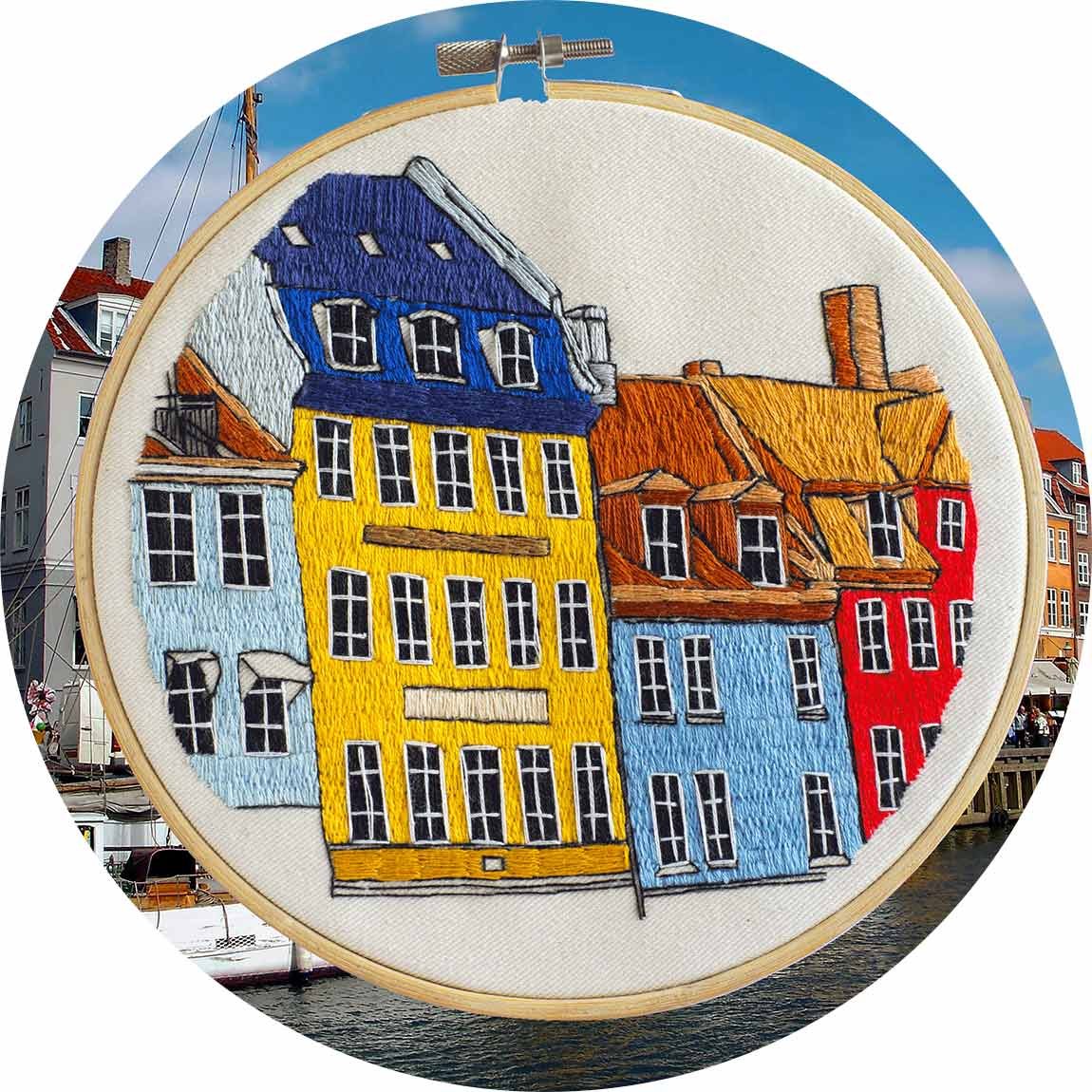Copenhagen Buildings 🇩🇰
This hand embroidery pattern of Copenhagen buildings fits perfectly into a hoop of 15cm (6") or larger. The pattern will be sent to your email as an instantly downloadable PDF immediately after purchase.
The pdf also includes
🎨 colour guide
🔖 stitch guide
📖 general technique guide so that you can embroider the design with confidence.
This hand embroidery pattern of Copenhagen buildings fits perfectly into a hoop of 15cm (6") or larger. The pattern will be sent to your email as an instantly downloadable PDF immediately after purchase.
The pdf also includes
🎨 colour guide
🔖 stitch guide
📖 general technique guide so that you can embroider the design with confidence.
This hand embroidery pattern of Copenhagen buildings fits perfectly into a hoop of 15cm (6") or larger. The pattern will be sent to your email as an instantly downloadable PDF immediately after purchase.
The pdf also includes
🎨 colour guide
🔖 stitch guide
📖 general technique guide so that you can embroider the design with confidence.
Story of the Copenhagen buildings design
The Copenhagen buildings embroidery design is perfect for you who love strong colors. The design is inspired by the Nyhavn area in the center of the city, which is known for its historical and colorful buildings. They all rise closely to each other, with a view over the boats in the harbor just across. Furthermore, below the houses you have a picturesque street filled with cosy cafés and restaurants. Perhaps you'll sit here on your next travel to Copenhagen eating a traditional Danish dish?!
The perspective of the design aims to make you feel like you are looking up at the buildings. It's the unique angles that make up interesting and inspiring patterns. Furthermore, it helps you to practice the direction of your stitches. In other words, how the direction of your stitches has an impact on the perception of your final embroidery. Look closely and you'll see that the walls of the buildings are stitched vertically. This emphasizes the height of the buildings, as opposed to if they'd been stitched horizontally.
Hence, this approach to embroidery makes it closely related to painting philosophy. Therefore, the Copenhagen embroidery design is considered a thread painting motive. In addition to the direction of stitches, thread painting also involves decisions of colors and techniques. We recommend to use the split and satin stitches for smooth surfaces. You can find video tutorials of all the stitches you need to know to successfully complete the pattern in our free embroidery library.
Embroidery stitches used in this pattern:
Back stitch
Satin stitch
Split stitch
You can learn how to embroider the above techniques in this article or via our free video stitch library Going Knots .
Materials you need to complete this embroidery design:
🖼️ Cotton canvas (or any non-stretch and non-transparent cotton fabric such as Duck canvas 7oz)
🖼️ Embroidery hoop of 15cm (6")
🎨Embroidery needle (We love to use 1-5 Bohin France or DMC needles)
🧵 Embroidery floss (DMC colour codes are indicated on your pattern pdf)
✂️ Scissor
📝 Carbon paper for transfer (Alternatively solvy paper, iron-on pen or any other transfer method of your preference)
🖊️ Pointy ball point pen
📏 Optional: Small ruler
Here is an article with more information about the various materials that we use.
BONUSES
→ Included in your pattern pdf is a video tutorial on how to transfer our architectural hand embroidery designs with carbon paper.
→ Upon purchase you will also receive an invitation to our supportive Private Facebook community that is available only for stitchers of our designs and courses.
Learn more with online courses
Are you keen to dive deeper into the Architectural hand embroidery style?
Then you’d want to have a look at our in depth Architectural hand embroidery and thread painting courses on Charles and Elin Academy!
In addition to courses on Architectural designs we also offer other inspiring courses to support you on your exploration of modern hand embroidery.


